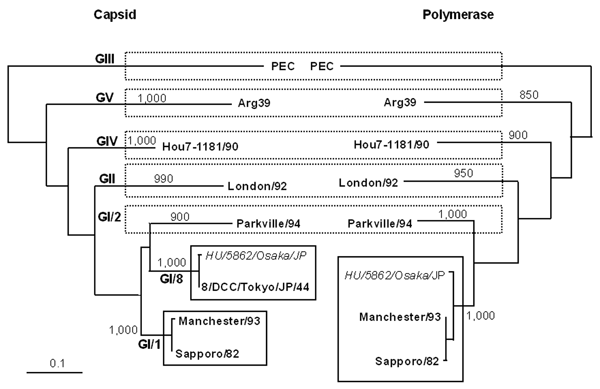Volume 12, Number 5—May 2006
Letter
Novel Recombinant Sapovirus, Japan
Figure

Figure. Changing genotypes of sapovirus on the basis of phylogenetic trees. Trees were constructed from partial amino acid sequences of capsid and polymerase of HU/5862/Osaka/JP highlighted in italics. Phylogenetic tree with 1,000 bootstrap resamples of the nucleotide alignment datasets was generated by using the neighbor-joining method with ClustalX. The genetic distance was calculated by using Kimura 2-parameter method (PHYLIP). The scale indicates amino acid substitutions per position. The numbers in branches indicate bootstrap values. Porcine enteric calicivirus was used as an outgroup strain for phylogenetic analysis. The nucleotide sequence data of sapovirus strain HU/5862/Osaka/JP has been submitted to GenBank and has been assigned accession no. DQ318530. Reference sapovirus strains and accession nos. used in this study were as follows: PEC (AF182760), London/92 (U95645), Arg39 (AY289803), Parkville/94 (U73124), Manchester/93 (X86560), Sapporo/82 (U65427), Hou7-1181/90 (AF435814), and 8/DCC/Tokyo/Japan/44 (AB236377).